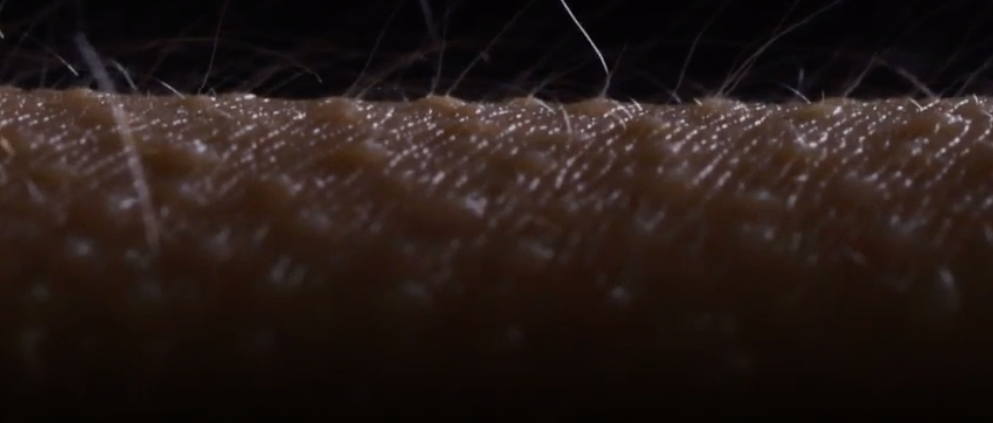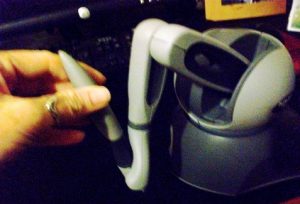“Are you going to the ‘Feelies’ tonight Henry?” [1]
In Aldous Huxley’s book ‘The Brave New World’ [1], he speaks about going to the ‘feelies’, which transcribes as Huxley’s futuristic vision of cinema audiences being enabled to feel the scenery in the film , as well as view the film simultaneously.
Figure 1. ‘The Feelies’ A London based group is already designing sensory perceptive feedback for films and virtual realms. [2]

Eighty Five years on, we are now able to allow PC users touch led interactions via varied forms of haptic rendered interfaces connected to haptic desk mounted devices or exoskeleton gloves, so users can virtually sculpt a ceramic pot, or grasp at a haptic rendered object in the virtual realm.
Figure 2. Geomagic Touch haptic Device (own source).

Chase Buckley [3] predicts that new user interaction technology will further augment sensory interactions and it will begin trending as early as 2018-2019. Buckley predicts that the next level up from haptic interaction is ‘Hapnotic’ feedback. This is a new way to subtly change the users feelings and perceptions via a form of dual sensory stimulus which will be fed to the user simultaneously. Users will feel a blended sensory feedback e.g. sight and sound, which will subtly lull the user in to a form of hypnotic, immersive states. Currently the concept is called synesthetic sensory interaction and it is being cited as the answer to Huxley’s vision of the ‘feelies’…
Background
How many times has the smell of a barbeque and the heat of the sun made you reflect on memories of long languid summers in your garden with friends and family? Think about it, it just takes a slight tang of lit charcoal in the air, to make you wish you had a burger in one hand and a beer in the other. The sense of smell is the only sense which we use without cognitive thought. We activate our sense of smell purely just by taking a breath. It is also the sense which is most likely to connect and trigger our core memory. Imagine smelling cut grass without triggering a memory of summer, or smelling citrus or cinnamon without conjuring the Christmas festivities.
Infants often use a synesthetic version of the senses as a whole to transcribe real world interactions. It is only later in life when the brain organisers the senses to work independently of each other so that the eyes focus vision, the ears pitch sound etc… Buckley shares with us the detail behind ‘synesthetic feedback’ design products. Products which are currently being utilised via a variety of devices e.g. goggles, headsets, body adornments. All of the interactive devices, aim to connect the user to a mixed fusion of sensory perceptions simultaneously, thereby eliciting multi sensory perceptions which add value to a virtual scene or a film.
Can you foresee you booking a Feelies chair in the next Odeon experience?
Over to you…
Has it taken 85 years to manage to fill Aldous Huxley’s vision of being able to go to the Feelies?
What are your thoughts? Do you look forward to placing on the 3D headset, which could allow you to view trees blowing and feel the breath of wind on your face at the same time? Do you think this would allow a better immersive experience from your favourite film? Or do you think this is technology mumbo jumbo?
Whatever your initial thoughts why not try to explore the links below and perhaps consider if you would use this type of interaction? Who could gain value from using this type of interaction? It would be interesting to read your thoughts on this future trend.
References
1. Aldous Huxley (1932). Brave New World. Chatto and Windus
3. https://medium.com/@ChaseBuckleyUX/the-future-is-imminent-9-design-trends-for-2018-38de77ef95c0

Leave a Reply